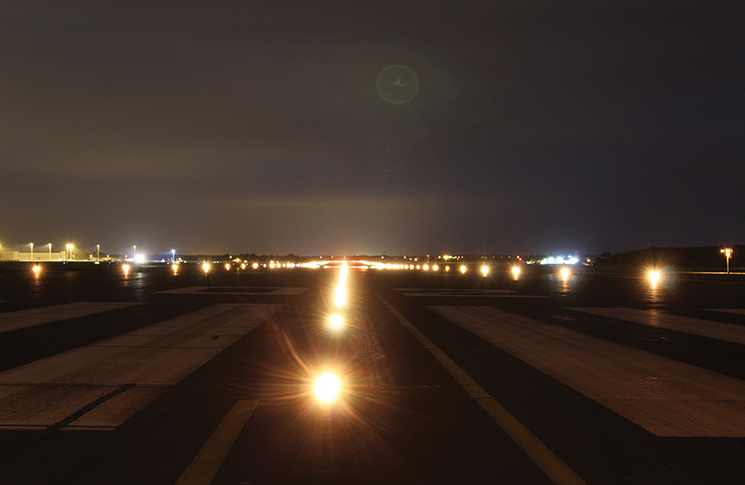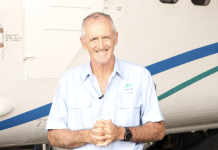A pilot writes about a simple mistake made years ago.
‘So, what happened on take-off?’ someone asked me. ‘I heard you power up, ease off a bit, then power up again?’
‘Can I talk to you about it in a minute? I’ll just unload my passengers,’ I replied. I got my passengers out – they seemed glad to be home and not stuck on a remote airstrip. Their aircraft breaking down was what had dragged me away from a family dinner to go flying.
‘Thanks,’ said one of them. ‘You’re very professional.’
I didn’t respond. He wouldn’t have called me professional if he knew what I’d done on the take-off to go fetch him.
With all of 10.7 hours of night flying, I’d been chosen for the flight because I was the only one still sober on a Friday night. The extra 0.7 hours was what I’d done with another pilot to get current, only a few nights before. The other night flying had been done nearly a year ago, with only 5 hours in command, all in a circuit pattern. I’d been type-rated on this particular aircraft for about a month.
For this flight, I did a flight plan, got the aeroplane ready, refuelled and had finally been cleared to line up on the runway. It was pouring rain, but the ATIS said I was legal, regarding cloud base and visibility, if a return to the aerodrome after take-off was necessary.
I taxied from the holding point, briefly putting my head down to note what my wheels up time would be. I looked up and found I was almost abeam the lights, so quickly turned 90 degrees and lined up.
The tower cleared me for take-off.
I sat there, making sure I had the numbers in my head right, making sure the engine instruments were in the green, then powered up. The first few metres were smooth, but then suddenly quite rough. I stared as hard as I could through the rainy windscreen at what my lights were on and, to my absolute horror, found my left wheel was trundling through grass.
The lights that I had lined up on that moonless, rainy night were the runway edge lights! I pulled the power back slightly and careered right so that I could get myself back on the runway. I knew it had to be over there somewhere! Once I was sure I was on it, I powered up again and took off. I had already analysed what had gone wrong and what actions I should have taken.
In cruise, my ground speed was 45 knots slower than the flight planner said it should be, so I worried I had damaged a landing gear door, and this was slowing the aircraft. I queried the speed difference with Centre and asked for an updated wind forecast. It turned out the winds had changed since I’d flight planned, so that explained the drop in speed.
The lights that I had lined up on that moonless, rainy night were the runway edge lights!
En route, I got a call from my chief pilot. He was calling because he knew it was my first night flight alone, that the weather wasn’t particularly flash and to tell me that I was under no pressure. ‘Don’t fly outside the limitations, do an instrument approach, don’t push it. If you don’t get in, just come back empty, it’s OK, you’re under no pressure from myself or ops.’
My first instrument approach alone went well and my landing went well, too. It was pouring rain there, so I taxied extremely slowly, with as many lights as I could muster and made sure I stayed on the sealed surfaces. Now the only thing left to check was what the runway lights looked like when I got back to my home base and, perhaps, if there were any tyre marks in the grass.
My take-off was no hassle, cruise was great, and I managed a visual approach into the aerodrome. The runway lights looked okay, but my landing lights weren’t good enough for me to see if there were skid marks. Then I pulled up to let my passengers out – and met the person asking questions about my earlier take-off!
After my passengers went on their way, I told the person who had asked the question exactly what happened. How this was my first night flight alone, how it was pouring rain and I simply couldn’t see well enough. That I had lined up on a line of lights, thinking it was the centreline lighting, when it was the runway edge lighting.
They told me they had wondered what had happened and went out to check the lights, but said none were damaged.
Lessons learnt
Night is one of the biggest, most underrated threats to a pilot. So many accidents and incidents have occurred at night that would not have happened during the day. Do not underestimate it.
When taxiing at night, and most particularly when entering and lining up on the runway, do not put your head down. If you need to write something, wait until you are stationary.
Study the lighting in ERSA. You may have runway edge lighting and no centreline lighting. In this case, expect to see a row of white lights either side of the runway. The far end of a runway normally has 6 evenly spaced red lights. If you can see the end of the runway, aim for the halfway point of these 6 lights. Some runways also have centreline lights. If this is the case, expect to see a line of lights either side of you, as well as one in line with your take-off.
Raindrops can be up to 6 mm in diameter, but anything less than 0.5 mm is classed as drizzle. Due to the smaller size of water droplets in drizzle, the visibility is usually poorer than in rain. Remember your VMC criteria, in section 2.07 of the Part 91 Manual of Standards.
See also: AC 61-05 Night VFR rating.
Non-controlled operations
Non-controlled operations is one of the special topics on our Pilot safety hub. Refresh your knowledge.
See also the Aviation decision-making card at casa.gov.au.
Online extra
Don’t forget to check out the audio close calls. Hear the stories come to life.
Have you had a close call?
8 in 10 pilots say they learn best from other pilots and your narrow escape can be a valuable lesson. We invite you to share your close call experience to help us improve aviation safety, whatever your role.
Disclaimer
Close calls are contributed by readers like you. They are someone’s account of a real-life experience. We publish close calls so others can learn positive lessons from their stories, and to stimulate discussion. We do our best to verify the information but cannot guarantee it is free of mistakes or errors.





